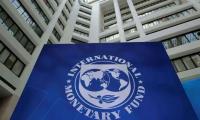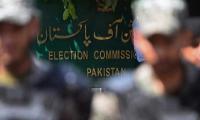The war of words between the PML-N and the PPP is becoming increasingly acrimonious with each passing day. The PML-N feels that by not siding with it in a ‘make-or-break’ political situation, the PPP has stabbed it in the back. The PPP is of the view that only the House of Sharif, and not the democratic system, is on the hook and that there is no reason it should bail out the beleaguered ruling family.
Since the PML-N government was sworn in in June 2013, the PPP – until fairly recently – was accused of playing the role of a friendly opposition. During the prolonged dharnas staged by the PTI and the PAT in 2014 – which, at one stage, had appeared only a whisker away from dislodging the government – the PPP threw its full weight behind the PML-N. The PPP defended its role on the ground and clarified that it was supporting democracy and not the ruling party. Later, the PPP leadership would complain from time to time that, once off the hook, a ‘thankless’ Nawaz Sharif had turned his back even on its genuine concerns.
Things began to change when Sharif was put in the dock on the charges of accumulating assets beyond his declared sources of income. Sensing that the three-time prime minister was in hot water, the PPP switched gears and began gunning for the ruling family. Sharif finally received disqualification at the hands of the Supreme Court. The PPP not only hailed the apex court verdict but also contemptuously dismissed the conspiracy theory, expounded by Sharif, as an old wives’ tale.
The former prime minister’s unceremonious exit was an event of singular significance in Pakistan’s political history in several respects, not the least of which was the reversal of the roles of the PPP and the PML-N.
The PPP has styled itself as an anti-establishment party, which is wedded to the cause of democracy. The claim may be valid, but only partially. Although Z A Bhutto, the PPP’s founder, was brought up in the lap of a military despot, he eventually broke ranks with him and forced him to hang up his boots at the head of a popular movement. But the party’s anti-establishment saga had yet to commence. If the PPP had such credentials, it would have demanded the transfer of power to the Awami League, which had won Pakistan’s first nationwide elections and thus was entitled to form the country’s first popularly-elected government. But that was not to be.
While Bhutto’s role in the 1971 break-up of Pakistan remains shrouded in controversy to date, it is an indisputable fact that at no point during those fateful months did he concede the Awami League’s right to form the government. If he were a true democrat, he must have put his full weight behind his Awami League counterpart Sheikh Mujib, who demanded that his party be handed over power.
Bhutto was installed as the president and civilian chief martial law administrator in the post-dismemberment Pakistan. He finally got what he had been itching for – albeit at an enormous national cost. It was his ouster on July 5, 1977 in Pakistan’s third military coup that set the PPP up as an anti-establishment party. From then on, it was to be the most potent voice of democracy in the country, for which it paid no small price. Bhutto was executed following a trial that is widely believed to be fatally flawed.
With Benazir Bhutto at the helm, the PPP returned to power in 1988. But Benazir was dismissed in less than two years on corruption charges. The dismissal was upheld by the court. Benazir was back in power in 1993 but was again sent packing in 1996 on similar grounds. Her dismissal was once again upheld by the judiciary.
Between those events, Nawaz Sharif’s 1993 dismissal was overturned by the apex court. All this made the PPP accuse the courts of adopting a biased approach and disregarding the popular mandate.
Amid all her rant and rave, Benazir made a common cause with the then President Ghulam Ishaq Khan (GIK) in forcing the popularly-elected Prime Minister Sharif to quit in 1993. That was one of few stains in an otherwise illustrious political career. GIK was an archetype establishmentarian who had the knack of being in the good books of successive rulers until he himself made it to the top post.
For a party that avowedly believed in respecting the popular mandate, striking an alliance with a GIK-like figure to force the exit of an elected government was hard to defend. But then, politics is more about power than about principles and the PPP is no exception to this. The ensuing elections predictably returned Benazir to power.
The PPP’s reputation received another serious jolt when it struck a deal with the military regime of Gen Pervez Musharraf under the National Reconciliation Ordinance (NRO) that washed away corruption charges against the party’s top leadership. There is little doubt that in the absence of the NRO neither the PPP would have formed its government in 2008 nor Asif Zardari, the party’s supreme leader, would have made it to the highest office of the land. Not only that, both the PPP government and former president Zardari completed their five-year terms. These feats could not have been accomplished without the blessings of the powers that be.
Nawaz Sharif’s politics began and shot up under military ruler Ziaul Haq. For years, he remained the establishment’s blue-eyed boy. It was in 1993 that he fell out with the then president GIK and had to vacate the prime minister’s office. Four years later, he swept back into power. But he was never to enjoy the same confidence of the powers behind the throne again. The second stint as prime minister saw him fall out with the president, the chief justice and the army chief. Although he forced all three to step down on the trot, he was doomed to bite the dust. In 1999, by a freak of fate, another general toppled him.
The PPP sees a great opportunity for itself in the fall of Sharif and it is experienced enough to know how to cash in on that opportunity. That is why it is grasping at the straws to make itself palatable to the arbiters of the last resort. It is doubtful whether the PML-N would have acted differently if the PPP were on the receiving end. Such is the political culture of Pakistan.
The current predicament of two of the country’s prime political parties is a manifestation of the prisoner’s dilemma. It is in the interest of both parties to cooperate. However, each party has an incentive to cheat, knowing that if it cooperates but the other defects, it may end up being on the losing side. On the other hand, in case it defects and the other cooperates it may end up being on the winning side.
By the same token, it is in the interest of both the PPP and the PML-N to cooperate in order to strengthen democracy in the country as their future is linked to a strong democratic order. If the applecart of democracy is set aside, both of them will lose – as was the case in 1999 when Gen (r) Musharraf staged a coup. However, each party has an incentive to cheat the other to attain short-term gains.
It may be recalled that in May 2006, the two parties drew up the Charter of Democracy and expressed its commitment to wage a joint struggle for the cause of democracy. These vows of unity notwithstanding, each party suspected the other of striking an underhand deal with the military regime. As the events unfolded themselves, those suspicions were not unfounded. The so-called unity and the Charter of Democracy fell apart within a year after the PPP struck the NRO with the regime.
The writer is a freelancecountributor.
Email: hussainhzaidi@gmail.com
A health worker administers polio vaccine drops to a child during a door-to-door polio vaccination campaign in Lahore,...
Armed militants of the banned Tehreek-e-Taliban Pakistan pose for a photograph in Orakzai Agency. —...
An aeroplane of the national flag carrier of Pakistan is seen in this file photo. — AFPWhile Pakistan considers...
Representational image of a graph depicting various variables. — APP/FileInitiated by the centre and fiercely...
In this picture taken on April 16, 2023, people throng a market area during shopping in Lahore. — AFPOne of the...
Honour crimes also target men. In Sikandar Ali Lashari vs The State, SHC upheld conviction passed by ATC for honour...







